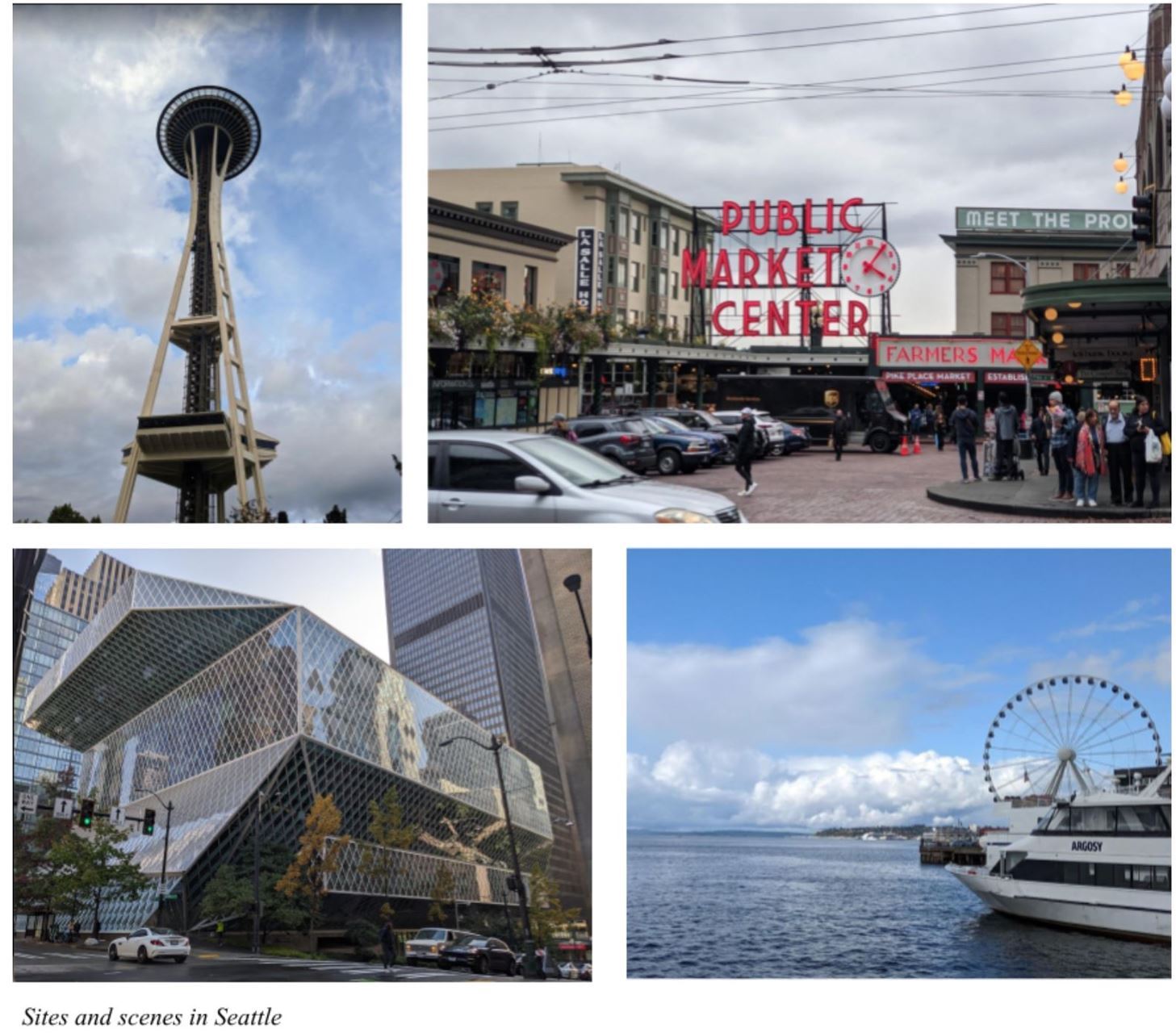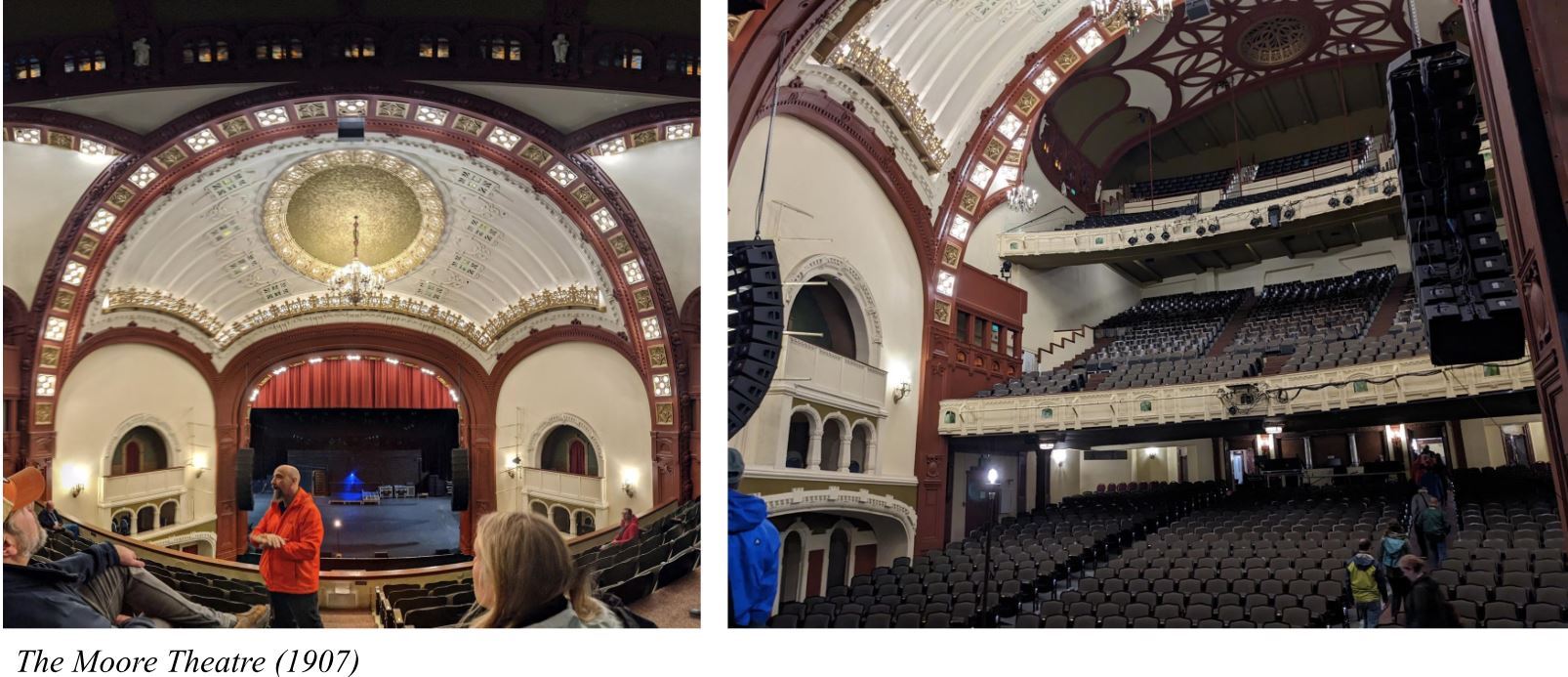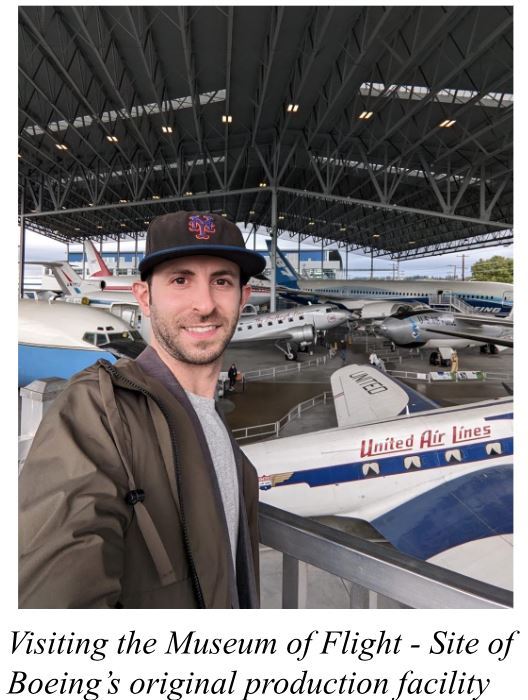
As an emerging professional in the field of architectural preservation, I’m constantly seeking opportunities to learn from and engage with fellow preservation and conservation professionals. The APTi conference provides just that; a forum for students, emerging professionals, experts, and educators to come together and speak on the unique experiences that make preservation such a meaningful and exciting field. As the recipient of APT DC’s 2023 Emerging Professional Sponsorship Program, I’d like to start by thanking the DC chapter and its members for supporting my professional trajectory and sponsoring my attendance at this year’s APTI conference in Seattle, Washington.
With this year’s conference in the coastal northwest it was appropriate that the primary theme of the conference was ‘The Future of TECH - Technology, Environment, and Cultural Heritage’. An early acknowledgment of the land on which the conference took place — the ancestral land of the Duwamish, Stillaguamish, Muckleshoot, and Suquamish peoples — provided an apt reminder to all preservation professionals that where and what we work to preserve goes beyond bricks and mortar; just as there are tangible histories, there are intangible histories. There are difficult histories behind the development of our cities and as the built environment grows rapidly, we as professionals have a responsibility to acknowledge and contextualize the full history of people and place. The topic of cultural heritage and land use remained a constant theme throughout the conference, from the opening keynote by David B. Williams (Too High and Too Steep: Reshaping Seattle’s Topography) to the College of Fellows keynote by architect Dr. Yasmeen Lari (Lessons from Global South: Community Engagement for Decolonization and Decarbonization of the Built Environment).
 In addition to topics of cultural heritage and land use, learning tracks in technology and environment were supported by field sessions, seminars, and symposiums related to climate change, resilience, seismic retrofits, material conservation, envelop upgrades, and other topics — far too many to list here. With my professional experience working on cultural projects, and personal research related to resilience, I took advantage of sessions related to technology and the changing environment.
In addition to topics of cultural heritage and land use, learning tracks in technology and environment were supported by field sessions, seminars, and symposiums related to climate change, resilience, seismic retrofits, material conservation, envelop upgrades, and other topics — far too many to list here. With my professional experience working on cultural projects, and personal research related to resilience, I took advantage of sessions related to technology and the changing environment.
The first of these was a field session which explored Seattle’s historic theatres, the goal of which was to introduce our multidisciplinary group to the ins-and-outs of how these cultural centers have been adapted to meet the needs of contemporary productions, modern codes, and increasing threats of climate and tectonic activity. During this field session we had an opportunity to explore The Moore Theatre (1907) - originally a vaudeville house and one of Seattle’s oldest theatres, The Paramount (1928) - a grand movie palace that now hosts large scale theatrical tours and music acts, and the Martin Cinerama (1962) - a mid-century movie theatre restored with a mix of retro and modern technologies. The care taken in adapting the theatres to meet contemporary production needs, while still maintaining the original historic fabric, was tasteful and inspiring. Hidden seismic stabilization, upgrades for rigging and production support, and retractable orchestra level seating were presented as necessary upgrades that, while sometimes visible, ensured the theatres stayed economically viable. This economic viability is important to maintain that the historic theatres remain open, preserved, and cared after for generations to come. Preservation of such theatres not only provides a stage for ticketed shows but they have become community hubs to support local performing arts and youth programs, their preservation providing an added societal benefit.


For the breakout sessions I was thrilled to see the number of presentations related to the environment and climate, highlighting the importance of climate preparedness, adaptation, resilience (coastal and inland), embodied carbon, and cultural protections related to environment and landscape. The resounding theme of these presentations was the participatory component, describing the means and methods of communicating with local stakeholders to identify what is deemed historically or culturally important, and should a natural disaster occur, which sites should be prioritized for the restoration of community and place. Another noteworthy topic was that of embodied carbon. The adage “the greenest building is the one that’s already built” was emphasized by presenting advancements on measurement tools and data analysis that can fairly accurately compare the carbon already embodied in an existing structure with that required to construct a new structure (CARE tool).
 Overall, APT 2023 was an unforgettable experience that brought further meaning to the work we perform in preserving historic and aging sites, buildings, and artifacts. The conference provided a forum to learn, network, and share our common and unique experiences, supporting knowledge and best practices that will result in more equitable, responsive, sustainable, and lasting preservation results.
Overall, APT 2023 was an unforgettable experience that brought further meaning to the work we perform in preserving historic and aging sites, buildings, and artifacts. The conference provided a forum to learn, network, and share our common and unique experiences, supporting knowledge and best practices that will result in more equitable, responsive, sustainable, and lasting preservation results.